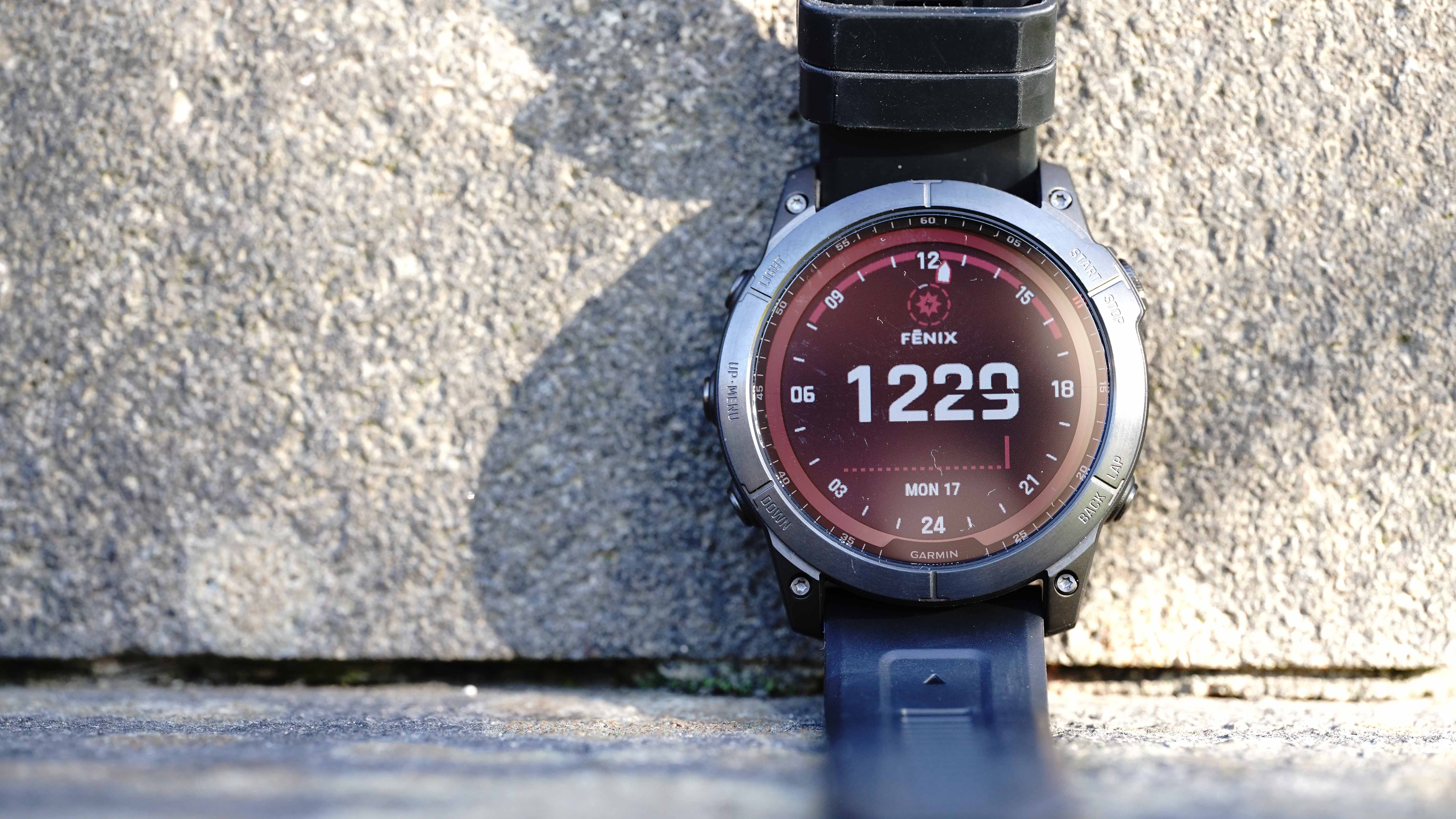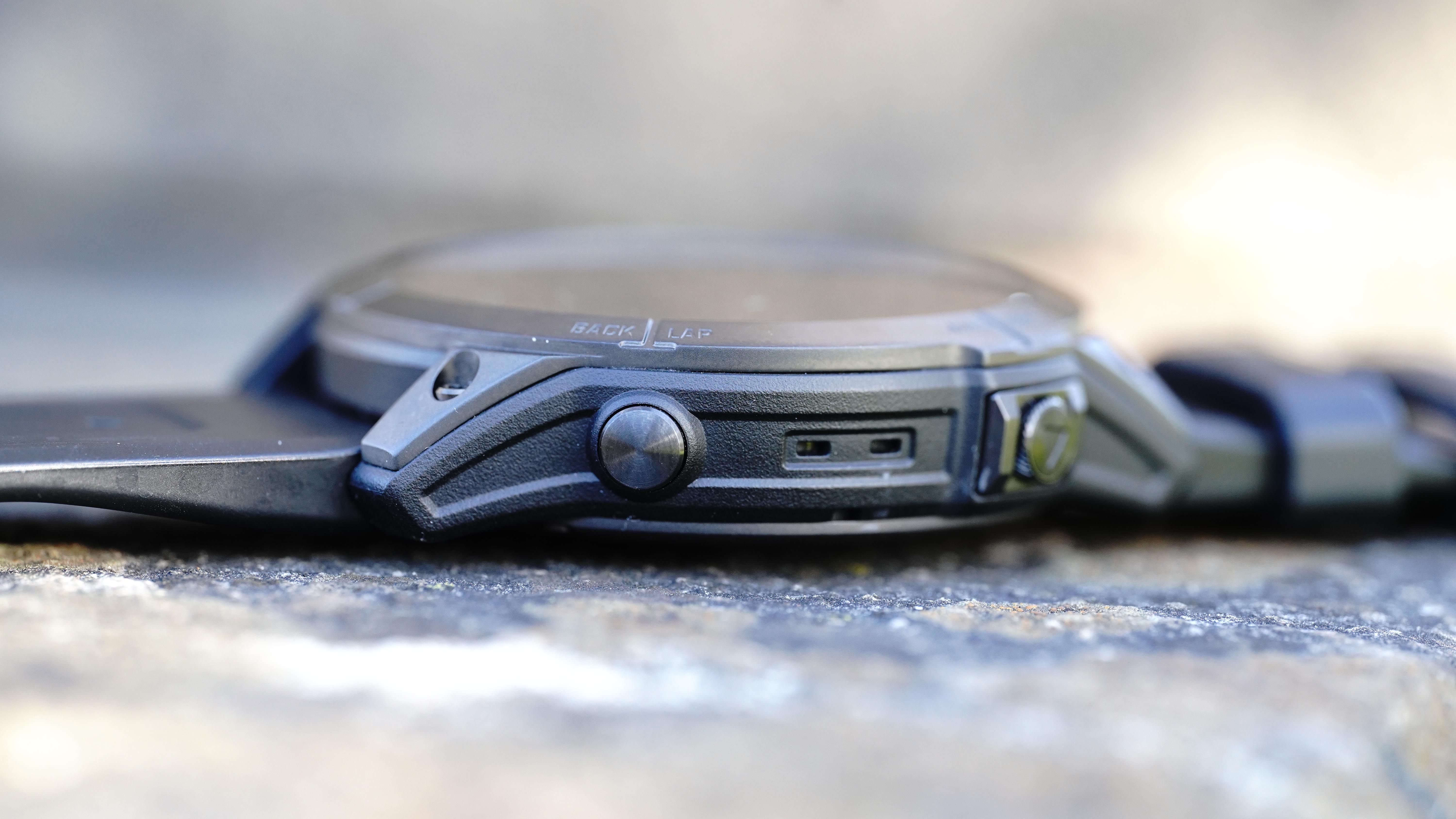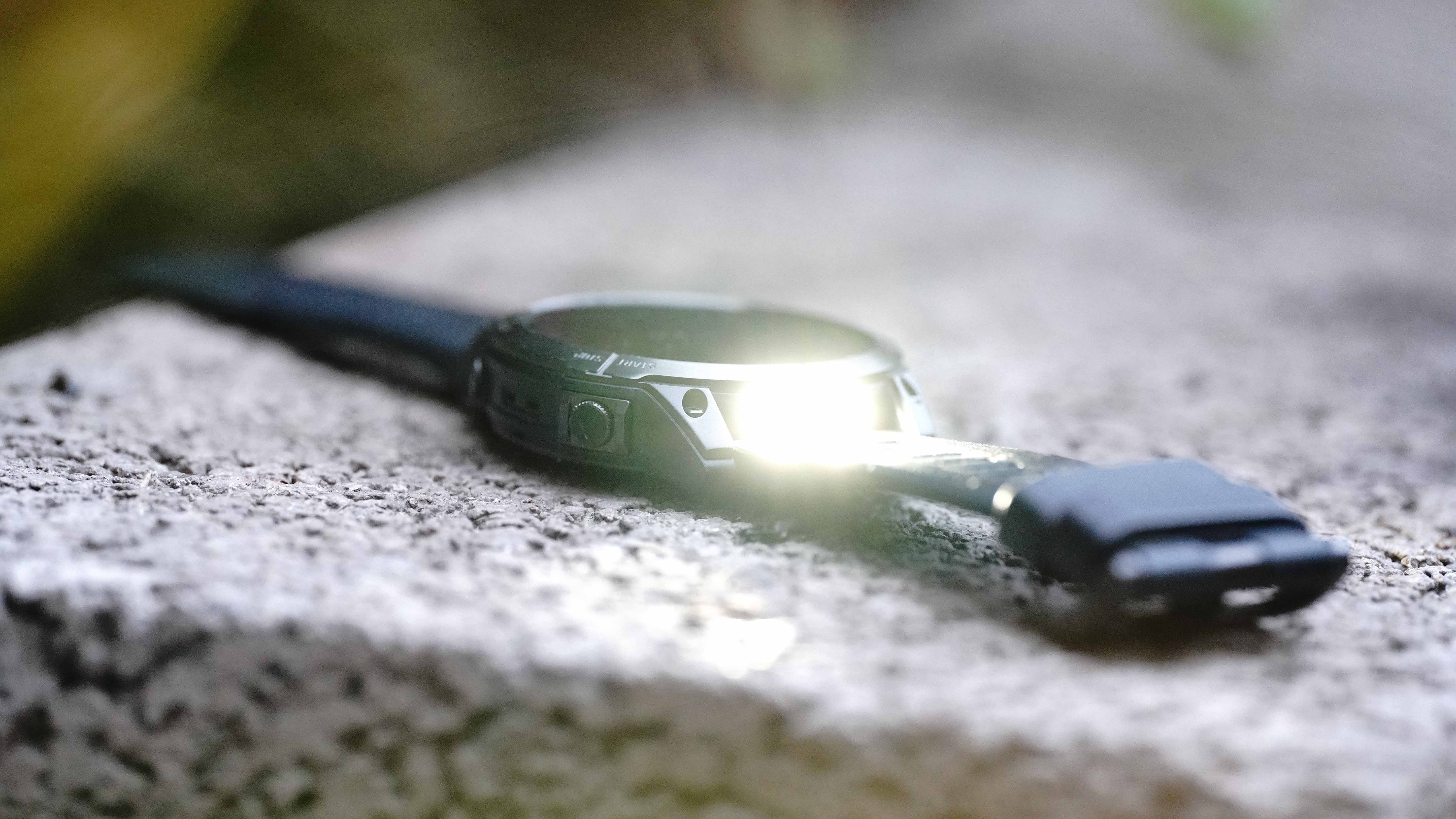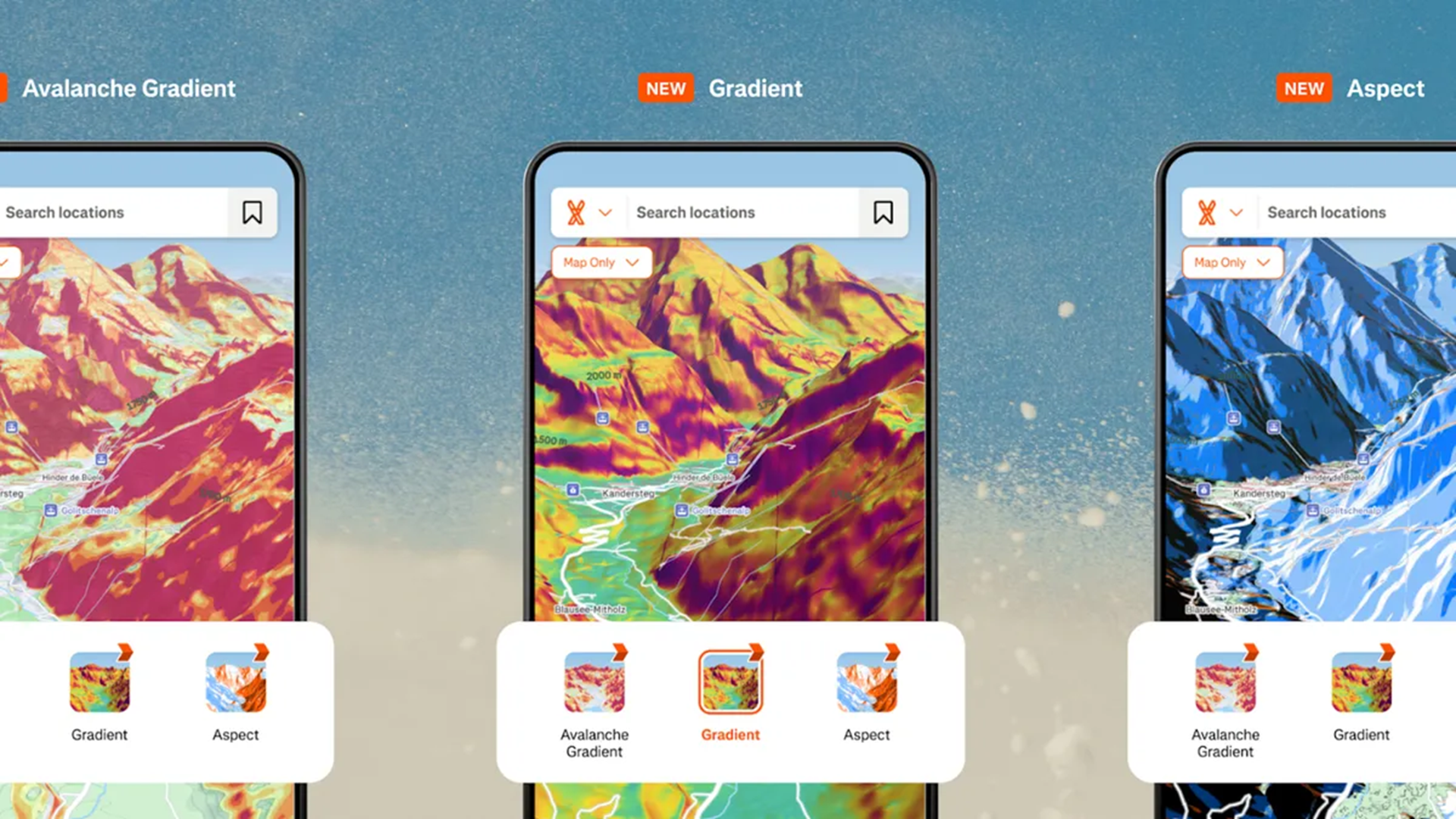Garmin Fenix 7X review – A brilliant rugged smartwatch for outdoor folks
The Garmin Fenix 7X is bigger, bolder and more versatile than its predecessor and now comes with a built-in flashlight



The Garmin Fenix 7X is a beast of a smartwatch and improves on the already excellent Fenix 6, which is a great achievement. Like previous Fenix models, the Fenix 7X is big, bold, and works well as an outdoor, running and triathlon watch; but very few people will be able to utilise all its features.
-
+
Flashlight is useful and fun to use
-
+
Real-time stamina meter is useful and interesting
-
+
Power Glass performs better and further extends battery life
-
+
Refined physical design
-
+
Touch controls work well
-
+
Faster and more reliable GPS
-
-
Bulky to wear 24/7
-
-
Flashlight is only included in the 7X model
Why you can trust T3

Garmin Fenix 7X review TL;DR: an absolute beast of a smartwatch and one of the best outdoor watches on the market today. A shame it hasn't got an AMOLED screen, but at least the flashlight is fun to use.
I'm a massive fan of the Garmin Fenix 6 Pro. In my humble opinion, it's the best Garmin watch as it can be used for quite literally everything; you can use it for trekking, running, triathlons, indoor workouts and more. It's fast, accurate, looks great on the wrist and thanks to many different iterations, there certainly is a Fenix 6 watch for everyone out there.
At least, this was my opinion until I tried the new Garmin Fenix 7X. Considering how well-regarded its predecessor is, I couldn't imagine what the Fenix 7X could possibly offer to make me want to switch from the Fenix 6 Pro. However, after spending a few weeks with the Fenix 7X, I can safely say it's absolutely the best outdoor watch on the market, maybe even the best triathlon watch. I can safely say that it's my new favourite rugged smartwatch, and it will be yours, too.
Best of all, the Fenix 7X has an actual working flashlight. A total game-changer, as it turns out! The Garmin Fenix 7X is so brilliant it won the Best Multisport Watch category at the T3 Awards 2022. [Please note: I used the Garmin Fenix 7X Sapphire Solar model for this review. All comments and observations are true to that version of the watch.]
Garmin Fenix 7X review: Price and availability
The Garmin Fenix 7 was released in January 2022 and is available to buy now at Gamin US, Garmin UK and Garmin AUS. Available models include Fenix 7S, Fenix 7 and Fenix 7X (small to large watch body, respectively), with standard (non-solar), Solar and Sapphire Solar Editions options. The suggested retail price starts at $699.99/£599.99/AU$1,049. Check out T3's best cheap Garmin deals roundup for the latest offers on the Fenix 7.
Garmin Fenix 7X review: Fenix 7X vs Fenix 6 Pro
In-depth: Garmin Fenix 7 vs Fenix 6
At first glance, the Garmin Fenix 7X doesn't look significantly different from the Fenix 6 Pro: the body of the two watches looks more or less the same, and they use the same user widget-based interface. The 5-button layout and the silicone strap also feel almost identical.
Once you start paying attention to the finer details, you'll notice significant differences between the two models. The Fenix 7X has an updated physical design that uses fewer screws, and some of the pushbuttons are now also more pronounced, so you can find them easier.
It might not be noticeable straight away, but the antenna is positioned differently to improve GPS performance; it's not in the watch's lugs, where less material is between the antenna and the GPS signal. Speaking of GPS signal: the Fenix 7X has multi-band positioning and multi-continent mapping for more reliable navigation compared to the Fenix 6 Pro.
Another update is the addition of a touch screen. Garmin worked out how to combine the solar-harvesting Power Glass with a responsive touch surface, so you get the best of both worlds in the Fenix 7X: long battery life and convenient day-to-day operation. In fact, the Gamin Fenix 7X has better solar harvesting capabilities than the Garmin Fenix 6x Pro Solar, thanks to the updated Power Glass that now harvests more energy from the sun.
With the introduction of Sapphire Solar models, you don't have to choose between solar capabilities and a scratch-resistant sapphire lens, as you had done previously for the Fenix 6 Series. There are three notable differences in features: a new flashlight has been added to the Fenix 7X model, there is a real-time stamina tracker when you do your workouts, and you can now do Health Snapshots using the watch, too. More on these below.

Garmin Fenix 7X review: Physical design
The Garmin Fenix series has always been renowned for its ruggedness, and the Fenix 7X takes this a step further by improving the watch case with protective button guards and metal-reinforced lugs. Garmin also used reinforced materials in key areas to reinforce the structure and make the case even more resilient without changing the watch's look too much.
You'll find the same five buttons around the case; the bezel and the case also look strikingly similar to the Fenix 6 Pro. The number of screws used to tighten the body has been reduced and moved away from the bezel; this makes the watch face of the Fenix 7X look less cluttered.
One notable difference between the two watches can be found at the back: the Fenix 7 uses the new Elevate V4 optical heart rate sensor, first seen in the Garmin Venu 2, which has a different LED layout and provides more accurate heart rate readings. The default silicone strap looks and feels the same as before.
Garmin Fenix 7X review: Solar harvesting and battery life
Thanks to the addition of the solar-harvesting Power Glass, the Fenix 7X has a battery life that rivals the Garmin Enduro. The updated Power Glass in the Fenix 7 is said to be more raised, which improves solar harvesting capability up to 200% in smartwatch mode compared to the Fenix 6 Solar.
The updated design maximises solar surface area for increased efficiency. The solar-powered Fenix 7X models can go even longer between charges with a battery life of up to 5 weeks in smartwatch mode and 5 days in GPS mode. That's five days' worth of GPS tracking on one charge! Truly mind-blowing.
In practice, you won't need to charge the watch more than a couple of times a month under normal circumstances (e.g. you aren't out for 5-hour running sessions with GPS every day). Given enough sun exposure, the solar-powered Fenix 7X can probably function for a month without needing to plug it in.
Garmin Fenix 7X review: Features
Being a flagship model, the Garmin Fenix 7X has pretty much every feature included Garmin could think of, many of which can be found in other Garmin watch models. These include – but are certainly not limited to – Pulse Ox (blood oxygen monitoring), wrist-based heart rate, respiration and stress tracking.
Body Battery, Fitness Age and Sleep Score with Advanced Sleep Monitoring are also available on the Fenix 7X. These are powered by Firstbeat Analytics' patented algorithm and are getting more precise as time goes on (and more data is collected).
You also get all the smart features on the Fenix 7X, including notifications, Garmin Pay contactless payments, offline music (e.g. Deezer, Spotify, etc.), Bluetooth connectivity to headphones, and more. The Garmin Fenix 7X can connect directly to WiFi routers, significantly improving connection. Handy when you want to update your offline Spotify library on the watch.
There are safety and tracking features, too, with automatic incident detection and manually triggered assistance alerts, both of which send a message with your real-time location to emergency contacts. This can be set up in the Garmin Connect app.

Garmin Fenix 7X review: New feature – Flashlight
I must confess, when I first read about the flashlight feature, I thought it was a gimmick in the Fenix 7X, but after I tried it, I can't imagine how I lived my life without it until this point. To clarify, it's not the usual 'the screen lights up' kind of flashlight we're talking about but an actual flashlight built into the watch. You can turn it on by long-pressing the light button (top left) and choosing the flashlight option or quickly double-pressing the same button.
The flashlight has four different brightness settings and even a red light option. The light coming from the flashlight is powerful and can be used for various tasks. I appreciated that there was a flashlight readily accessible on my wrist, and used it quite a lot during the winter days when I tested the Fenix 7X.
The flashlight has another function: it can provide extra visibility when you're out on your runs. Once turned on in the run settings, the flashlight can be set to match your cadence and flash white when your arm swings forward and red when it swings backwards. This can provide runners with another layer of visibility, and since it's all integrated into the smartwatch, the feature is ultra-convenient to use.
In my experience, this function was a bit hit and miss and couldn't really keep up with my cadence, but it definitely made me visible when I was out for my morning runs in January.
Garmin Fenix 7X review: New Feature – Stamina
Speaking of features that need to be turned on in the settings: the new real-time stamina tracker is one of these. This is a typical Garmin move: adding loads of new features but not turning them on automatically. The same happened when the Enduro introduced ClimbPro, and I wonder if it's something to do with battery life.
The feature is exciting and can help you better understand the ideal pace you can sustain for more extended periods. Stamina is another Firstbeat Analytics feature, so it uses the algorithm mentioned above to measure and analyse your stats. During your runs, stamina can go up or down depending on a variety of factors.
Stamina measurements can come in handy during racing. By keeping an eye on it, you can evaluate "how much is left in the tank" and decide if your body is ready for an attack or if you're better off not pushing yourself because you won't last long enough to recover.
The Garmin Fenix 7X has two different stamina meters: stamina and potential stamina. The first one is the one that shows you how much is left in the tank. According to Garmin, it "considers both general fatigue accumulation and resource depletion together with the unique performance limitations associated with sustained high-intensity exertion above your anaerobic threshold."
This reflects short-term energy needs and usage and can be restored, even during an activity, by slowing down and allowing your body to recover. On the other hand, potential stamina is a general fatigue meter that tells you how much energy you have left for low to moderate-intensity exercise.
To put it in perspective: you can start sprinting at the start of your run, using up all your stamina but without affecting your potential stamina much. At a moderate intensity level, both meters should deplete roughly the same.

Garmin Fenix 7X review: Accuracy
I was in a pickle when trying to measure the accuracy of the Garmin Fenix 7X. I usually use the Fenix 6 Pro paired with the Garmin HRM-Pro as a gold standard for heart rate accuracy, but I couldn't really do that here. Instead, I checked the data against other running watches, including the Coros Pace 2, the Huawei Watch GT 3 and the Polar Vantage V2.
As expected, the Fenix 7X performed well during these tests. The Elevate V4 sensor was already accurate in the Venu 2, and if anything, the Fenix 7X feels even more on the ball when it comes to quick changes in heart rate. As always, it performs better for cardio workouts and when the wrist isn't twisted around too much, but all in all, the Fenix 7X is remarkably accurate.
GPS performance is superb. I remember being amazed by how quickly the Fenix 6 Pro picks up the GPS signal but thanks to the multi-band positioning (the watch uses the additional L5 frequency range), the Fenix 7X almost instantly connects to satellites. Isn't it wonderful that you don't have to stand around for minutes when you're all ready to go just so the watch can find a signal? It's the best.
Positioning in an urban environment is fine; the watch will almost always place you where you actually are. There were a few instances where I was running in densely built areas under some trees where I apparently went through buildings, but the route is never way off. The inaccuracies certainly didn't affect performance evaluations, and that's the main thing.
Garmin Fenix 7X review: Verdict
The Garmin Fenix 7X is not a cheap running watch, but it's more affordable than the Enduro and even the new Garmin Epix (Gen 2), so, in its category, the Fenix 7X is one of the best value watches you can get. The addition of touch controls makes the Fenix 7X more smartwatch-like, in a good sense, and probably more appealing to people who need an accurate multisport watch with all the smart features under the sun.
But a Fenix 7X is not just any old smartwatch; it's a premium smartwatch made of quality materials. It can withstand the elements, has a slew of exciting and useful features, and, finally, boasts an incredibly long battery life. Much like its predecessor, the Garmin Fenix 7 comes in many sizes, so you will likely find one that best suits your wrist size and style. Getting this watch will cost you, but you're certainly getting your money's worth with the Garmin Fenix 7X.
Garmin Fenix 7X review: Also consider
The Suunto 9 Baro Titanium is an excellent outdoor watch that has a long battery life (not quite as long as the Fenix 7, though) and good navigational abilities in a slimline package. Similarly to the Fenix 7, the Suunto 9 Baro Titanium feels like a smartwatch on the wrist while also being a capable navigational tool. It's also a bit c cheaper than the Fenix 7.
The Mobvoi TicWatch Pro 3 Ultra GPS feels premium without the premium price tag and is a great alternative to pricier adventure smartwatches such as the Garmin Fenix 7. Better still, the Qualcomm Snapdragon Wear 4100 and Mobvoi dual-processor system somehow makes Wear OS work, a rare achievement these days. It's really, really cheap, too.
Sign up to the T3 newsletter for smarter living straight to your inbox
Get all the latest news, reviews, deals and buying guides on gorgeous tech, home and active products from the T3 experts

Matt Kollat is a journalist and content creator who works for T3.com and its magazine counterpart as an Active Editor. His areas of expertise include wearables, drones, fitness equipment, nutrition and outdoor gear. He joined T3 in 2019. His byline appears in several publications, including Techradar and Fit&Well, and more. Matt also collaborated with other content creators (e.g. Garage Gym Reviews) and judged many awards, such as the European Specialist Sports Nutrition Alliance's ESSNawards. When he isn't working out, running or cycling, you'll find him roaming the countryside and trying out new podcasting and content creation equipment.
-
 Audeze’s new planar headphones promise studio-quality sound without a sky-high price
Audeze’s new planar headphones promise studio-quality sound without a sky-high priceThe new LCD-S20 closed-back headphones are Audeze's most affordable premium planar headphones yet
By Carrie Marshall Published
-
 Shark launches its smallest NeverChange Air Purifier yet – but it’s still just as powerful
Shark launches its smallest NeverChange Air Purifier yet – but it’s still just as powerfulShark reinvents its NeverChange Air Purifier in a new compact size
By Bethan Girdler-Maslen Published
-
 Strava gets major refresh with new map engine, searchable routes and tappable stickers
Strava gets major refresh with new map engine, searchable routes and tappable stickersLatest app update is a big win for planners, trackers and stat geeks
By Lee Bell Published